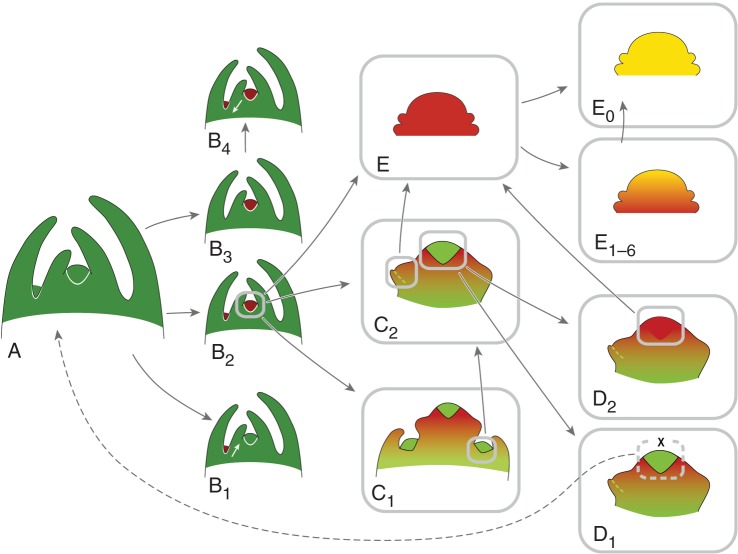Fig. 4.
Meristems and developmental pathways. The combination of different meristem types and developmental pathways allows the deduction of all forms of flowering shoot systems (see Figs 5 and 6). (A) Tip of a shoot system with vegetative meristems (green) in terminal and axillary position. (B) Transition to reproductive meristems (dark red), (B1) at axillary positions (white arrow: acropetal development), (B2) terminal and axillary position, (B3) terminal position, (B4) terminal position followed by induced axillary meristems (white arrow: basipetal sequence); (C) early reproductive meristem with indeterminate tip (light green zone), (C1) producing lateral partial inflorescences (compound inflorescences), (C2) producing lateral flowers or floral units (simple inflorescences). (D) Tip of late reproductive meristem, (D1) remaining indeterminate (cross) and rarely returning to vegetative growth (grey dashed line), (D2) merging into the determinate stage (light red; terminal flower/FU). (E) Determinate reproductive meristem (red) originating a floral unit (E1–6: red–yellow grade) or flower (E0: yellow). Grey frames: meristems and meristem parts exemplarily illustrating possible developmental pathways; arrows: developmental alternatives; green–red colour gradient: increasing reproductive signals in inflorescence meristems; red–yellow colour gradient: floral unit meristem fractionating into sub-meristems before starting flower production.

